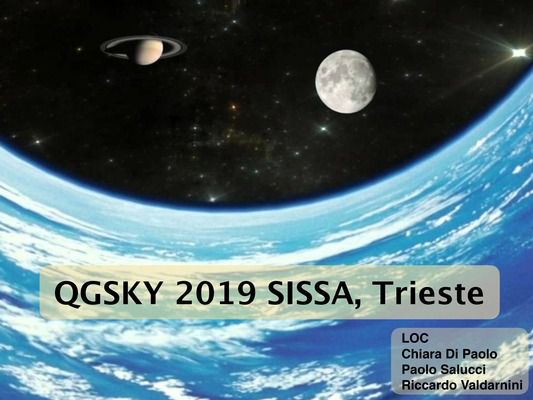Speaker
Description
We have analysed the Rotation Curves (RCs) of 310 Hα detected star-forming galaxies from KMOS redshift one spectroscopic survey (KROSS).
The targets were selected from four deep extragalactic fields those are covered by wide range of multiwavelength photometric and spectroscopic surveys:
1) Extended Chandra Deep Field Survey (E-CDFS);
2) Cosmic Evolution Survey (COSMOS);
3) Ultra-Deep Survey (UKIDSS);
4) High-redshift(Z) Emission Line Survey (HiZELS).
The median redshift of the samples is z = 0.85, H alpha luminosity is log(L Hα [ergs ]) = 41.5 The length scale of an individual galaxy is measured from High-quality broadband images taken from the above surveys.Furthermore, by adapting the concept and techniques of “Universal RCs of spiral galaxies at z = 0”, we have built the templates of normalised and co-added RCs over six-velocity bins out to 1.2 optical radii.
We mass model these co-added RCs using two different density profiles: 1) Burkert (1995) and 2) Navarro, Frenk & White (1996) including the gaseous disk contribution.
Thus allow us to determine the structural properties of individual spirals at z = 1.
In particular, we have determined the stellar mass M* , halo mass MH, gas mass MHI, halo radii RHI, dark matter density and core radius, as well as we have determined the angular momentum of stellar and dark matter component respectively.
By using these fundamental properties, we have examined the existence of global scaling relations (e.g. Baryonic Tully Fisher Relation) and the RC universality for redshift z=1 spirals.
All the analysis has been done using robust statistical approaches which allow us to reach an unprecedented level of precision.
Moreover, exploring the various disk, gas and halo models patronages to constrain the parameters without being biased to a particular model.
In this talk, I will present the preliminary result of this work, addressing the unique interplay between baryonic and dark matter from z = 0 to z = 1, the traditional core-cusp problem and the evolution of scaling relations toward z = 1.



